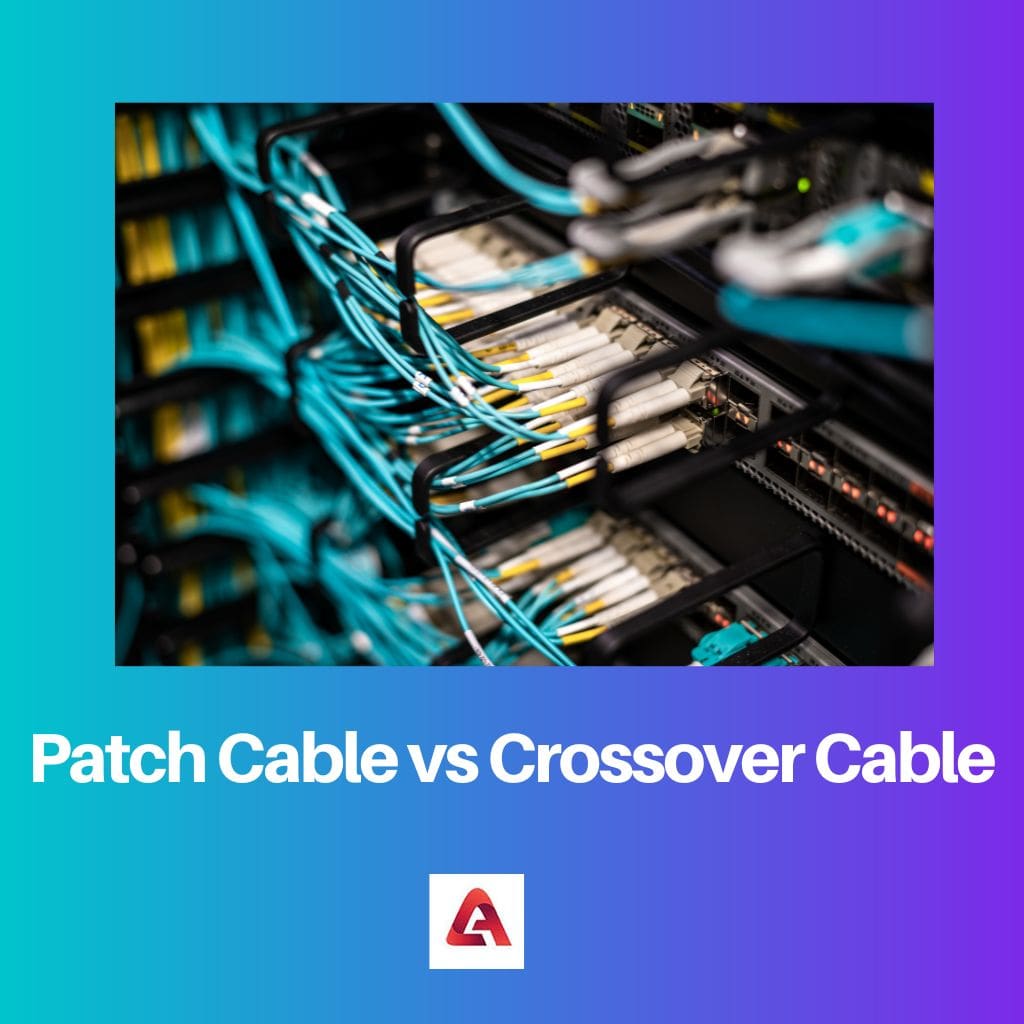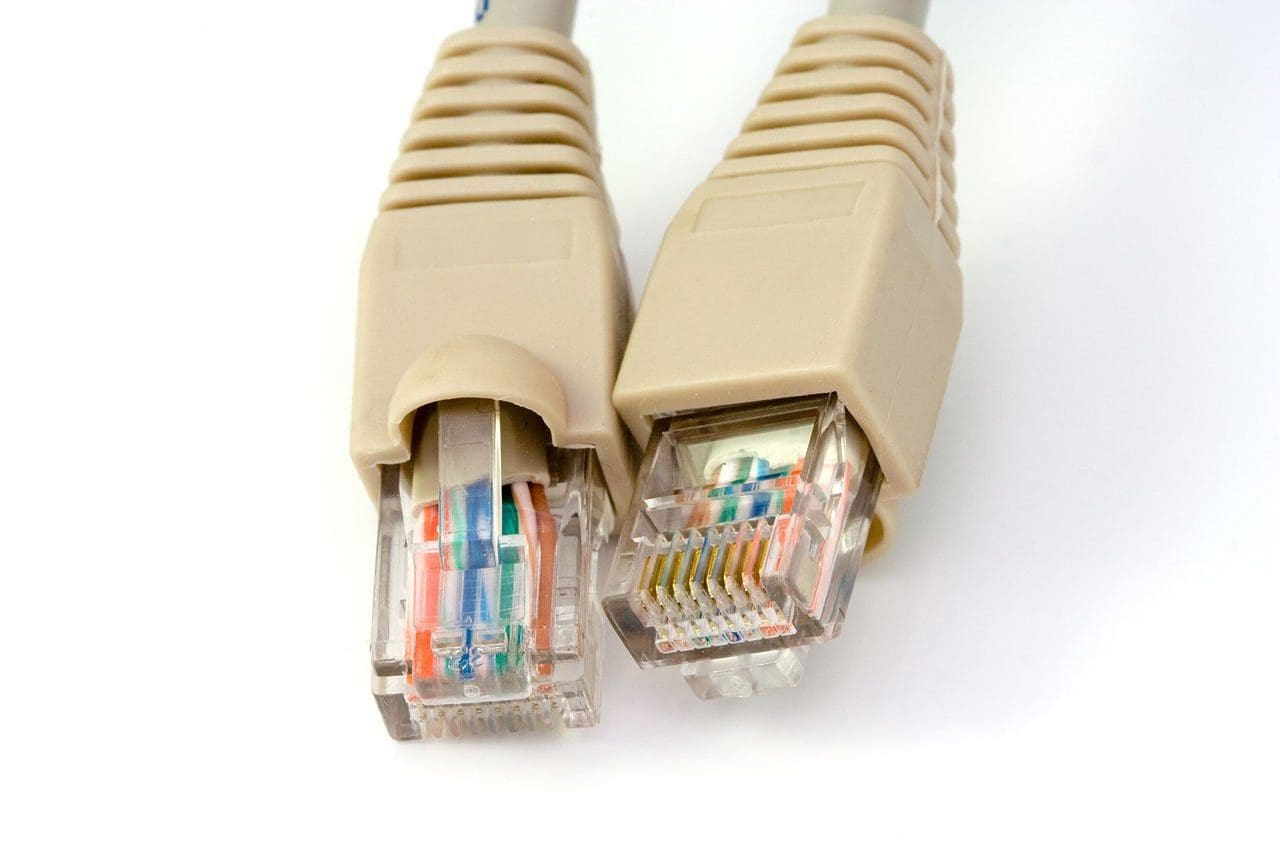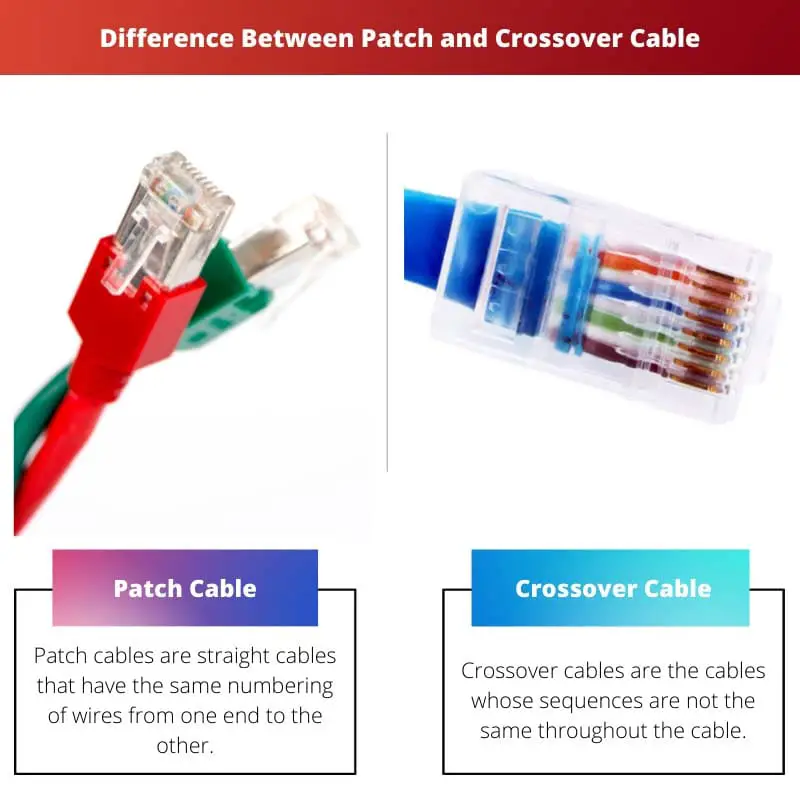In the era of modern technology, high-speed internet connection, cables, and connectors have increased a lot. The cables we buy from the market look the same but have a manufacturing difference under the insulating materials.
After purchasing the cables, we find that the cables are not getting connected to the devices we targeted. So to understand the difference between the cables, here are some facts about them.
Here are some basic differences between the patch and the crossover cables.
Key Takeaways
- A patch cable connects two devices of the same type, such as a computer to a switch or a router to a modem.
- A crossover cable connects two devices of different types, such as a computer to another computer or a switch to a switch.
- Patch and crossover cables are Ethernet cables used for network communication but have different wiring configurations to support different connections.
Patch Cable vs Crossover Cable
A patch cable is a type of cable that can be used to connect different types of devices. It is a straight cable that connects devices from both ends. It can be used to connect a computer to a switch or a router. A crossover cable is used to connect the same types of devices. It can be used to connect a computer to another computer or a switch to another switch.

Patch cables are straight cables that have the same numbering of wires from one end to the other. It is mainly used to connect different devices.
It is mainly used for internet connections domestically. This wire is first connected to the connectors and then connected with computers and routers to provide an internet connection domestically.
Crossover cables are cables whose sequences are not the same throughout the cable. In this, the wires within the cables are swapped r crossover inside the skin.
So they have different output number pins as of the input. So they are a little bit difficult to connect without the help of a professional.
Comparison Table
| Parameters of Comparison | Patch Cable | Crossover Cable |
|---|---|---|
| Type of cable | This is a straight cable from one end to the other. | This is a crossover or swap type cable. It swaps between the ends. |
| Connected between | Can connect two different devices | Can connect two same devices |
| Connects devices like | Computer to switch, hub and routers, etc. | Pc to pc, switch to switch, etc. |
| Pinots of connectors with cables | RJ455 connectors on both ends | T568A on one side and T568B on the other side |
| Examples | Cat5, Cat5e, Cat6 | Null modem cable, rollover cable, etc. |
What is Patch Cable?
Patch cables are straight cables that have the same numbering of wires from one end to the other. For example, a wire with PIN 1 at one end will also remain as the one with PIN 1 at the other end.
So when connecting these cables with connectors, it is very easy to connect. The same connectors can be attached at both ends due to the same connecting numbers.
It is very famous due to its feature of connecting different devices. It is mainly used for internet connections domestically.
This wire is first connected to the connectors and then connected with computers and routers to provide an internet connection domestically.
These types of cables are also used to connect internet hubs with routers at home and then from routers to the computer system or any other devices. Some commonly used patch cables are Cat5, Cat5e, Cat6, etc.
An example of this type of connection is a connecter Rj45 is connected with the cat cable on both ends of the cable, and then one side is connected to the internet hub and the other to the router.
Then, another cable with an Rj45 connector on both sides is connected to the router and the computer. In this way, the internet connection is made from the hub to the user’s system.

So they have different output number pins as of the input. So they are a little bit difficult to connect without the help of a professional.
What is Crossover Cable?
Crossover cables are cables whose sequences are not the same throughout the cable. In this, the wires within the cables are swapped r crossover inside the skin.
These cables are used to connect the same devices. Sometimes we need to share the internet from one pc if the other pc does not have an internet connection.
So to connect pc to pc or from any other similar devices, we use crossover cables.
Both ends of the cable consist of different connectors due to the difference in the output serial of the wires in the cable. So taking an example, a rollover cable is connected to T568A on one side and T568B on the other side.
Different serial pinouts can be best understood from the example. The wire at PIN 1 at one end can be found at PIN 3 on the other end.
Some examples of the crossover cables available in the market are null-modem cables, rollover cables, etc.

Main Differences Between Patch and Crossover Cable
- A patch cable is a straight cable from one end to the other, whereas a crossover cable is a crossover or swap-type cable it swaps between the ends.
- Patch cables can connect two different devices. On the other hand, a crossover cable can connect two same devices.
- Patch cables are used to connect devices like a computer to switches, hubs, routers, etc. On the other hand, crossover cables are used to connect devices like pc to pc, switch to switch, etc.
- Patch cables use the same types of connectors on both sides, like RJ455 connectors on both ends. On the other hand, crossover cables need different kinds of connectors on both sides, like T568A on one side and T568B on the other side.
- Examples of patch cables are Cat5, Cat5e, Cat6, and examples of crossover cables are null-modem cables, rollover cables, etc.

- https://www.taylorfrancis.com/chapters/edit/10.1201/9780429331251-10/building-patch-cable-ethan-geller
- https://ieeexplore.ieee.org/abstract/document/4383778/

The detailed breakdown of differences between patch and crossover cables is extremely informative. A very well-explained article.
I agree, the detailed breakdown really helps in understanding the specific applications of patch and crossover cables.
Understanding the connection processes of patch and crossover cables is crucial for efficient networking. The content has provided valuable insights.
Absolutely, it’s very useful to understand how patch and crossover cables are utilized for connecting devices.
This article has provided comprehensive information on the usage of patch and crossover cables, making it easier to distinguish between the two.
I find the information about the practical uses and examples of patch and crossover cables very informative and enlightening in making informed decisions about connectivity.
Understanding when and where to use patch versus crossover cables is crucial, and this article has effectively provided that insight.
The article has given a clear understanding of the differences between patch and crossover cables and their specific uses, making it easier to choose the right one for different scenarios.
Thank you for this detailed explanation of patch and crossover cables. It’s very informative and useful to know the difference between the two for connecting various devices.
I agree, this article is very informative and provides a clear understanding of the differences between patch and crossover cables.
The detailed explanations and practical examples provided in the article have been very educational and beneficial in understanding the applications of patch and crossover cables.
The detailed insights on patch and crossover cables in the article have been very helpful in understanding their specific uses and applications.
The information about how patch and crossover cables are used to connect different or similar devices is particularly enlightening. This will help me with future configurations.
The practical applications of patch cables in connecting devices were well-explained. It’s very useful information.
I also found the example of connecting devices using patch cables very helpful in understanding their applications.
Understanding the variation between patch and crossover cables is essential to ensure proper connectivity within a network. This information has been beneficial to me.
Absolutely, the comparison table for patch and crossover cables is especially helpful in illustrating the differences between the two.
This article effectively differentiates patch and crossover cables and has enhanced my understanding of how they are used for connecting devices.
The practical examples in the article have made it easier to comprehend the applications of patch and crossover cables.
I appreciate the detailed information on patch and crossover cables, and how they are applied for device connectivity.
The article has done an excellent job of elaborating on the differences in connectivity and application between patch and crossover cables. Very enlightening.
I found the detailed comparison table particularly helpful in understanding the differences and applications of patch and crossover cables.
I appreciate the detailed descriptions of both patch and crossover cables. It’s important to have clarity when choosing the right cable for specific connections.
I couldn’t agree more. This article certainly provides clarity on when to use patch versus crossover cables.